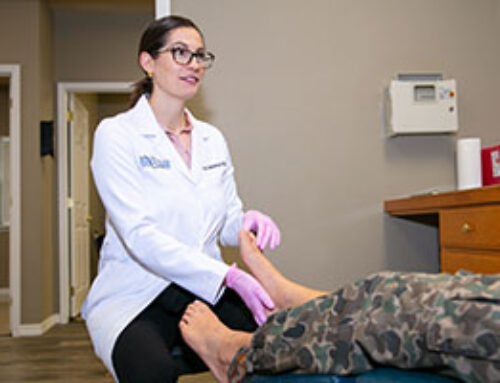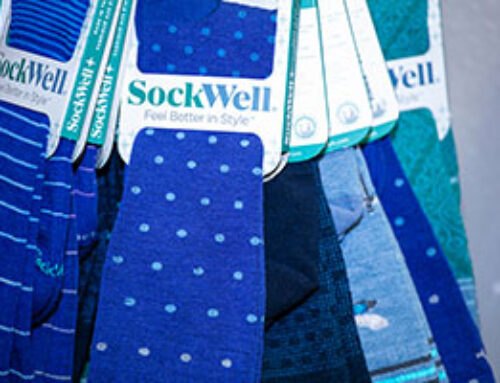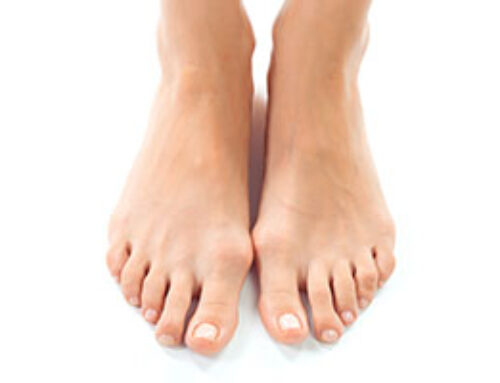Children and young athletes who spend a lot of time on their feet often experience pain and discomfort. The first step to treating foot pain in kids is to find out what’s causing it. While you may be able to relieve mild aches and tenderness with simple home remedies, parents need to know when it’s time to consult a professional.
When to treat flat feet
Babies are often born with flat feet. Over time, the condition usually resolves itself naturally, and most kids develop an arch by about age six. However, while most children typically outgrow flat feet, one or two out of every 10 children will continue to have flat feet as they grow up—and this can cause pain.
Flexible flat foot in children is more common than rigid flat foot. Your child’s foot will appear flat when standing up, but the arch will appear when the foot is elevated and not carrying weight. Most cases of flexible flat foot require no action because there is little to no pain or restriction of movement.
With rigid flat foot, there is no arch, even when the foot is not carrying weight. Your child may experience pain in the heel or arch that worsens after physical activity. Only a doctor can diagnose the condition and recommend a treatment plan.
Wearing shoes without proper arch support and obesity can also cause flat feet. In these cases, parents may want to consider buying insoles from a retail store or scheduling an appointment with a podiatrist so you child can be fitted with custom-made orthotics.
Plantar fasciitis in kids
Plantar fasciitis is one of the most common causes of foot pain in children and adults. The condition occurs when the plantar fascia—bands of tissue that support the arch of the foot and connect the heel to the toes—becomes inflamed.
Symptoms of plantar fasciitis include:
- A sharp pain in your heel with your first steps out of bed
- Pain in the bottom of your foot when you walk, run, or jump
- Pain that gets worse when you climb stairs or stand for long periods of time
- Pain that radiates down the bottom of the foot to the toes
Pain due to plantar fasciitis typically subsides after a few minutes of walking but may return after a long period of rest or sleep. Children who experience heel pain should take a break from physical activities as overexertion may aggravate plantar fasciitis. It’s also essential to wear supportive shoes and stretch before playing sports.
A doctor can determine if your child has plantar fasciitis by performing tests and observing how your child stands and walks.
Understanding bunions in children and teens
Bunions are bony bumps that form at the base of the big toe when the toes are compressed. The big toe is forced to curve toward the other toes and sticks improperly out of its joint. Bunions, or hallux valgus, are painful and often swell and turn red.
Left untreated, a bunion can lead to other conditions:
- Bursitis: Swelling of the fluid-filled sacs in the joints that may also cause damage to cartilage, resulting in arthritis
- Metatarsalgia: A condition in which the ball of your foot becomes painful and inflamed
- Hammer toe: A bend that resembles a hammer in the middle joint of the second, third, or fourth toe
Maintaining a healthy weight and wearing shoes that give the toes space can help prevent bunions from forming. If your child develops bunions, there are several ways to ease bunion pain without surgery, including:
- Use bunion pads to cushion the area and protect it from further stress. Ask your doctor before using pads, as they can cause more pain if they are too tight.
- Apply ice to reduce inflammation. Use an ice pack wrapped in a towel. Never apply ice directly to the skin, and don’t leave ice on the bunion for too long, as this can cause an ice burn. Don’t use ice to treat bunions if your child has nerve damage or circulatory problems.
- Take ibuprofen or other over-the-counter painkillers to help reduce inflammation.
Achilles tendinitis
The Achilles tendon connects the muscles in the back of the calf to the heel bone. Achilles tendinitis in children and teens occurs when the tendon becomes inflamed from overuse. It’s often the result of physical activity—particularly a sudden increase in the amount of activity—and causes pain just above the heel.
To prevent Achilles tendinitis, make sure kids don’t overexert themselves. For example, if your child is a runner and wants to double their daily distance, build up to that distance gradually.
If your child develops the condition, rest and refrain from strenuous activity. Stretching exercises for Achilles tendinitis can improve mobility.
Sever’s disease
When children experience growth spurts, the plate in the back of the heel can become inflamed and painful. The condition, Sever’s disease, is the most common cause of heel pain in kids, age seven to 14, who play sports or exercise regularly. It’s caused by repetitive stress on the growth plate where the Achilles tendon pulls on the back of the heel.
Treatment usually involves rest from physical activity, as excessive strain can be painful and cause damage to the Achilles tendon. Stretching the calf muscles may also help reduce the pain. Other remedies include:
- Placing ice packs on your child’s heel
- Over-the-counter medication to reduce swelling
- Cup inserts that cushion the heel
How to treat an ingrown toenail
An ingrown toenail occurs when a nail grows into the flesh of a toe. Kids who have outgrown their shoes or wear tight footwear that crowds the toes can develop ingrown toenails, often in the big toe. In addition to being painful, the area may become swollen and infected.
To reduce the risk of ingrown toenails, make sure your kids wear shoes that give the toes room, and teach them how to clip toenails straight across and not too short.
Epsom salts are a common home remedy for relieving the pain and pressure of an ingrown toenail. Mix the salts into warm water and soak your child’s feet for 15 minutes several times a day. Always dry the feet completely after soaking.
Never attempt to remove an ingrown toenail at home. Instead, schedule an appointment with a podiatrist who can perform the procedure safely.
Podiatrists treat foot pain in children
If your child experiences foot pain, take it seriously. Home remedies like stretching exercises, ice, and medication may provide short-term relief, but it’s important to address the underlying causes of the issue. Left untreated, foot pain can become worse and result in permanent tissue damage.
The board-certified professionals at Metro Tulsa Foot & Ankle Specialists are trained to provide a diagnosis and help your child find relief from foot pain. Schedule an appointment today at one of our five convenient locations. We look forward to seeing you and your child soon.
The information, text, graphics, images, and other material contained on this website are for informational purposes only. No material on this site is intended to be a substitute for professional medical advice, diagnosis, or treatment. Always seek the advice of your physician or other qualified health care provider with any questions you have regarding a medical condition or treatment and before undertaking a new health care regimen, and never disregard professional medical advice or delay in seeking it because of something you read on this website.
Subscribe to stay up-to-date on news and tips from us.




